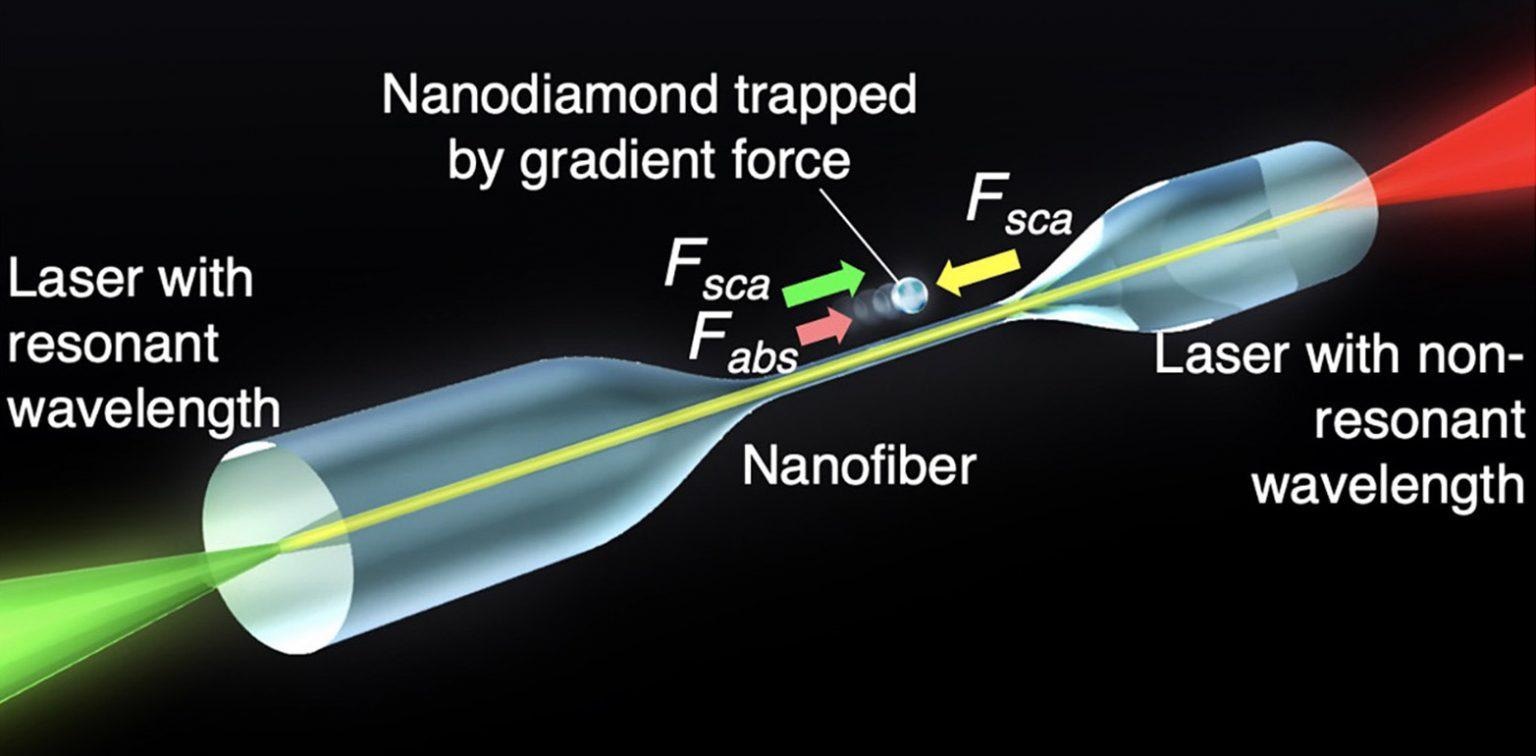Mar 29 2021
For a long time, researchers have been working on enhancing their potential to make use of lasers to move small objects without really touching them.
 The optical forces acting on the nanodiamond. The nanodiamond absorbs a part of the laser light that shines on it (Fabs); some of the light is also scattered (Fsca). The interactions between these forces cause the movement of the nanodiamond. Image Credit: Hideki Fujiwara et al. Science Advances. 13 January 2021.
The optical forces acting on the nanodiamond. The nanodiamond absorbs a part of the laser light that shines on it (Fabs); some of the light is also scattered (Fsca). The interactions between these forces cause the movement of the nanodiamond. Image Credit: Hideki Fujiwara et al. Science Advances. 13 January 2021.
This technique of “optical trapping and manipulation” has already been used in the fields of chemistry, biological sciences, and optics. However, objects turn much more challenging to manipulate as soon as they grow to nanoscale size.
At present, a research team including Keiji Sasaki from Osaka University and Hajime Ishihara from Osaka Prefecture University and Osaka University has discovered a method to move diamond nanoparticles with a diameter of around 50 nm, by making use of opposing lasers.
Reported in the Science Advances journal, their experiments aim at in-depth studies into the development of applications in fields such as quantum computing and biological imaging.
We believe our approach can enable a new class of optical force methodologies to investigate the characteristics of advanced nanomaterials and quantum materials and to develop state-of-the-art nanodevices.”
Keiji Sasaki, Professor, Research Institute for Electronic Science, Hokkaido University
Nanodiamonds include carbon atom lattices that at times have an imperfection where two neighboring carbon atoms are substituted with a nitrogen atom and a vacancy (fluorescent center), impacting their quantum mechanical properties. Nanoparticles respond to light in a different way based on their quantum mechanical property.
Nanodiamonds that feature this fluorescent center (resonant nanodiamonds) tend to absorb green light and discharge red fluorescence. They are being analyzed for applications in single-photon sources, biological imaging, and sensing. Nanodiamonds that lack these fluorescent centers are considered to be non-resonant.
Sasaki and his collaborators immersed an optical nanofiber in solutions containing nanodiamonds with and without fluorescent centers. When a green laser was irradiated via one end of the nanofiber, a single nanodiamond with fluorescent centers was trapped and carried away from the laser.
The researchers showed that when a red laser and a green laser were irradiated on the nanodiamonds from the optical nanofiber’s opposite sides, the motion of resonant and non-resonant nanodiamonds could be regulated separately.
As far as the non-resonant nanodiamonds are concerned, the red laser moves them more firmly compared to the green laser; but the resonant ones tend to absorb the red laser light and are thus moved in a stronger way by the green laser.
They could thus be grouped depending on their optical properties. Moreover, the number of fluorescent centers present in the resonant nanodiamonds could be measured by visualizing their movements under such conditions.
The researchers have illustrated a proof of concept by employing this method to hold and control nanodiamonds. The next step for them would be to utilize it for organic dye-doped nanoparticles, which can be used as nanoprobes in biodetection systems.
This research was financially supported by the Japan Society for the Promotion of Science (JSPS) KAKENHI (grant numbers JP16H06504, JP16H06506, JP18H03882, JP18H05205, JP17K05016, JP19H04529) and the Cooperative Research Program of the Network Joint Research Center for Materials and Devices, Japan.
Resonant and non-resonant nanodiamonds moving in opposite directions
Resonant and non-resonant nanodiamonds move in opposite directions when lasers of different wavelengths shine on them. Video Credit: Keiji Sasaki.
Journal Reference:
Fujiwara, H., et al. (2021) Optical selection and sorting of nanoparticles according to quantum mechanical properties. Science Advances. doi.org/10.1126/sciadv.abd9551.